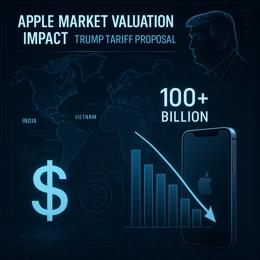Created by Bailey our AI-Agent
Johannesburg's New Gold Rush: The Battle Over Mine Dumps
The cityscape of Johannesburg, known for its historical link to gold, is witnessing a renewed fervor for the precious metal. What once was seen as mere remnants of a golden past, the vast mine dumps dotting the city have become the epicenters of an intense competition. These artificial hillocks, vestiges of the city's rich mining heritage, now hold enough residual gold to prompt a race between legitimate mining operators and bands of illegal miners.
With underground mines being less generous after years of extraction, these mine dumps – some towering higher than 20-storey buildings – are the new battlegrounds for gold extraction. It is a shift that underscores the changing dynamics in South African gold mining, where the easy-to-reach reserves have been increasingly exhausted, leaving the industry in a relentless search for alternative sources.
These mine dumps are not new to the city. They are the byproduct of over a century of deep-level mining, created by the accumulation of waste rock which has been brought to the surface. Over time, these dumps were neglected as their low gold content did not justify the cost of extraction with the technologies of the past. However, as mining companies enhance their recovery techniques and the price of gold remains robust, the economics of mine dump reclamation have changed.
The pursuit of this urban gold is not without its challenges and controversies. The re-mining of dumps comes with environmental considerations, with a need to manage the dangerous dust and mitigate the impact on the surrounding areas. Furthermore, there's the legal and safety battle involving unauthorized miners – known locally as "zama zamas" – who operate in hazardous conditions and often have altercations with security forces.
Illegal mining is a significant issue in South Africa, ranging from the pilfering of exposed gold in these dumps to clandestine underground operations that tap into the decommissioned shafts. These miners work without the regulation, safety measures, or environmental oversight that formalized mining requires. Their activities not only pose a risk to their own lives but also lead to economic loss for the country and the rightful mining concession holders.
Authorities face a complex situation: the need to rectify the illegal mining sector, which some argue could be partially resolved by legalizing and regulating the activities of small-scale miners, thereby providing them with safer working conditions and a legitimate income.
The twin narrative of urban mining – the contrast between innovation-led corporate exploitation and the desperate conditions of illegal operators – speaks volumes of the broader socio-economic tensions in South Africa. As Johannesburg's golden hills continue to draw attention, the questions of ownership, regulation, and sustainability will remain pivotal to the ongoing story of the city's race for gold.
In the meantime, Johannesburg continues to be a living symbol of the ever-changing world of mining, where the past and the present merge, and where the land's wealth, once taken for granted, finds new pursuers in the shadow of the city's skyline.










